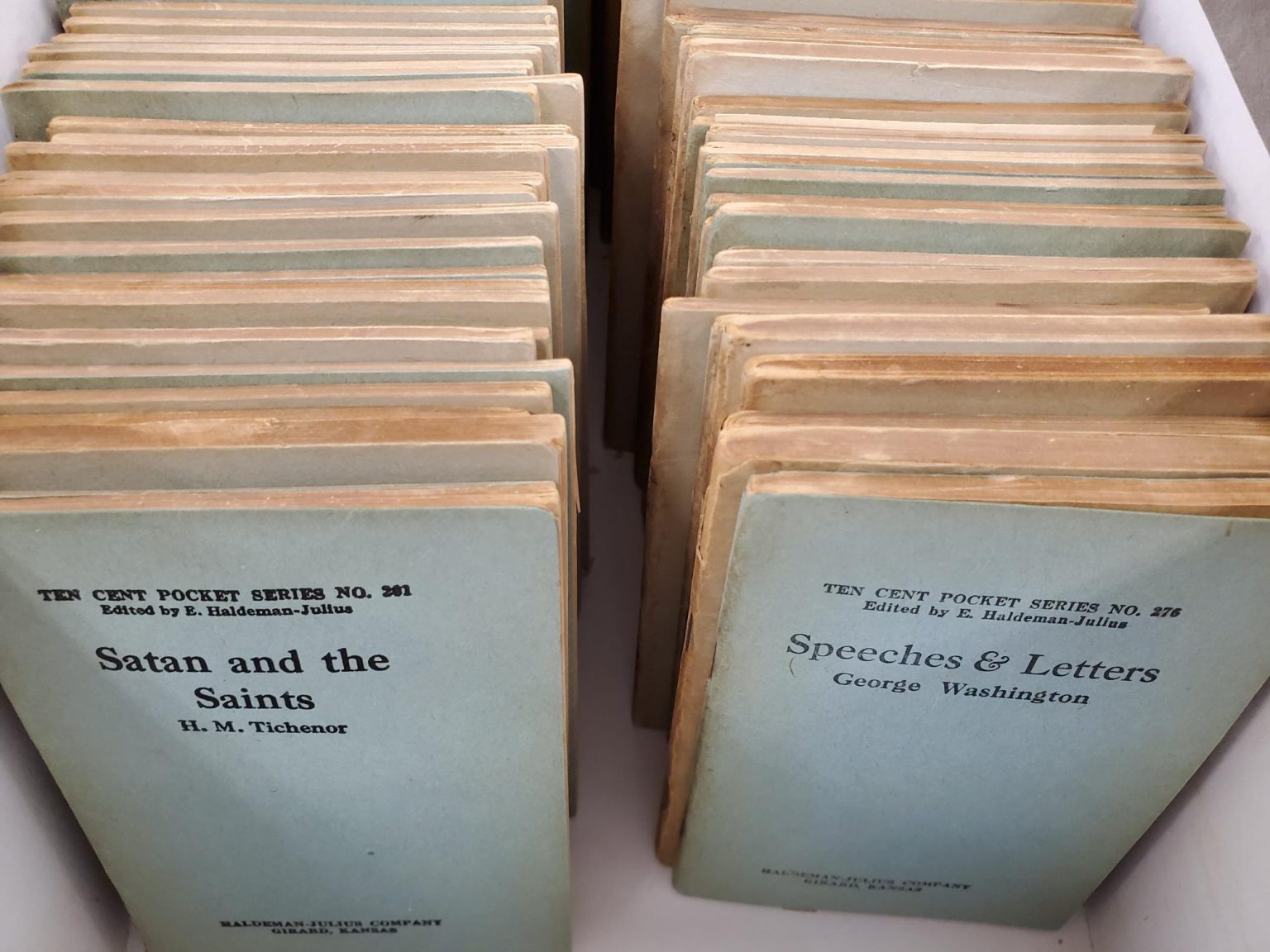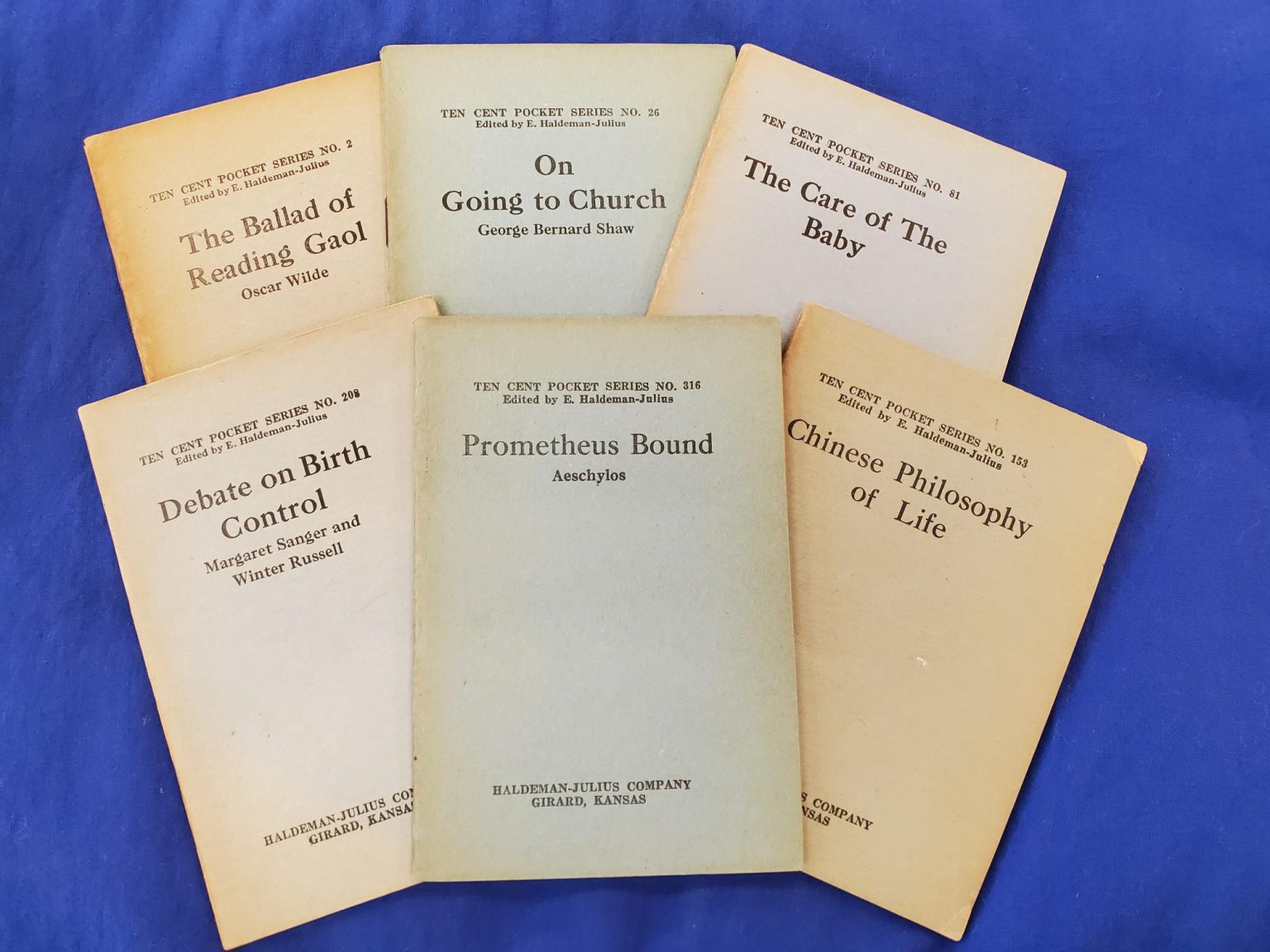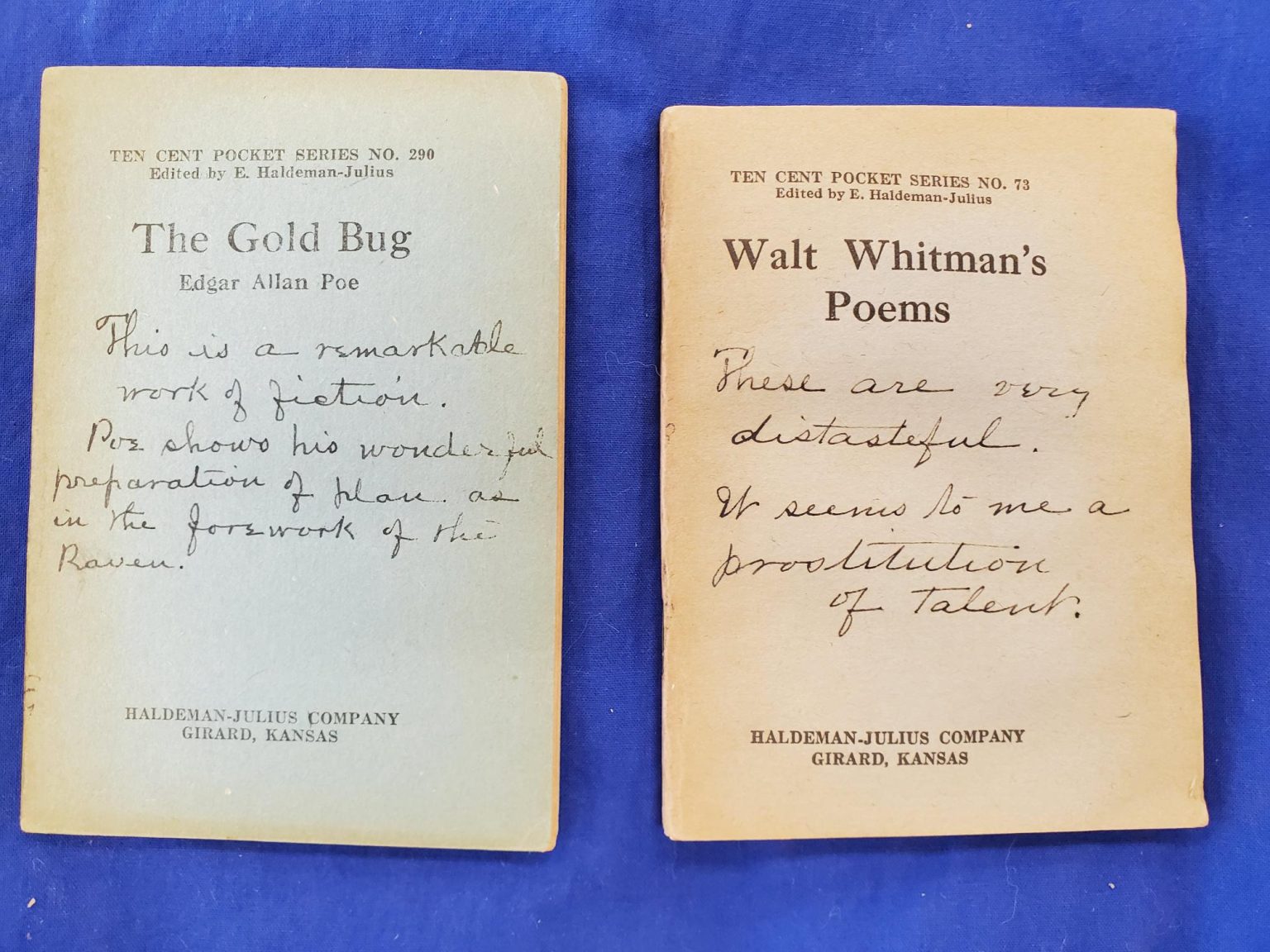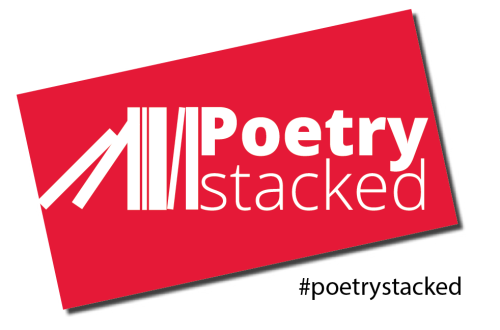New acquisition is a resource for radical publishing history
By Christopher Harter, University Archivist and Head of the Archives and Rare Books Library
“President Cancels Student Debt for 150K Borrowers. – The Hill, February 21, 2024
“40 Percent of Student Loan Borrowers Missed Payments in October.” – Politico, December 14, 2023
“Is Rising Student Debt Harming the U.S. Economy.” – Council on Foreign Relations, August 22, 2023
Between pandemic relief efforts and election cycles, student debt remains a hot topic in the media and among politicians, pundits, parents and students. And for good reason. As of March 2023, an estimated 44 million U.S. borrowers owed over $1.7 trillion in federal and private student loans. However, a recent acquisition by the Archives and Rare Books (ARB) Library provides a glimpse into an early 20th century effort to provide quality education for mere pennies, asking “Would you spend $2.98 for a college education?”
In 1919, an enterprising publisher in Girard, Kansas, Emanuel Haldeman-Julius, began a series of low-cost pamphlets that sought to revolutionize publishing and reading. Although the pamphlets went by many names (the Ten Cent Pocket Series, the Five Cent Pocket Series, the People’s Pocket Series and others) they are most commonly known by the last series name used by Haldeman-Julius: Little Blue Books. Today, you can find them in library collections, on eBay and in flea markets due to the astonishing number of Little Blue Books produced.

Printed on cheap paper and sized to fit in a pocket, Little Blue Books were printed at a rate of 24,000 a day when the Haldeman-Julius Publishing Company began. Costing between five and 10 cents per book, over 2,500 titles were produced during the life of the series with an estimated 500 million books sold between 1919 and 1978. At one point, the company was second only to the United States Government Printing Office in output, which earned Emanuel Haldeman-Julius the moniker “the Henry Ford of Literature.” Much of this was helped by his knack for advertising, such as the $2.98 for a college education question above and an ad proclaiming “At last! Books are cheaper than hamburgers!”
Titles included works of western literature and philosophy by authors such as Oscar Wilde, Henrick Ibsen, Victor Hugo, Alfred Tennyson, Plato, Edgar Allan Poe, George Sand, William Shakespeare and Mark Twain, among others. Other titles explored Eastern religion and philosophy. Some of the most popular Little Blue Books included how-to manuals and self-help books, discussions of social topics such as marriage, family, eugenics, socialism, and economics, as well as titles on psychoanalysis and sex.

It was the titles on sexual topics and socialism that eventually landed Haldeman-Julius and his publishing company in the crosshairs of J. Edgar Hoover’s FBI, the Catholic Church, and the U.S. Post Office. His cheap reprinting of works of poetry, drama and other literary works also drew the ire of larger publishers who felt their profits were being undercut by Haldeman-Julius’ cheap production and wide circulation. The heyday of the Haldeman-Julius Publishing Company and its Little Blue Books were seen in the 1920s and 1930, but they continued through Emanuel’s death in 1951 and finally a fire at the Girard printing plant and warehouse in 1978.

The Little Blue Books collection recently acquired by the Archives and Rare Books Library includes 207 titles. A collection level record with an individual title inventory is available in the library catalog. ARB hopes to expand its Little Blue Book collection through future donations and purchases. The history of the Little Blue Books and Emanuel Haldeman-Julius’ efforts touch upon publishing history in the United States during the interwar period, socialist and proletariat literature, education and censorship. Readers interested in learning more can explore R. Alton Lee’s 2018 biography, Publisher for the Masses, Emanuel Haldeman-Julius.



